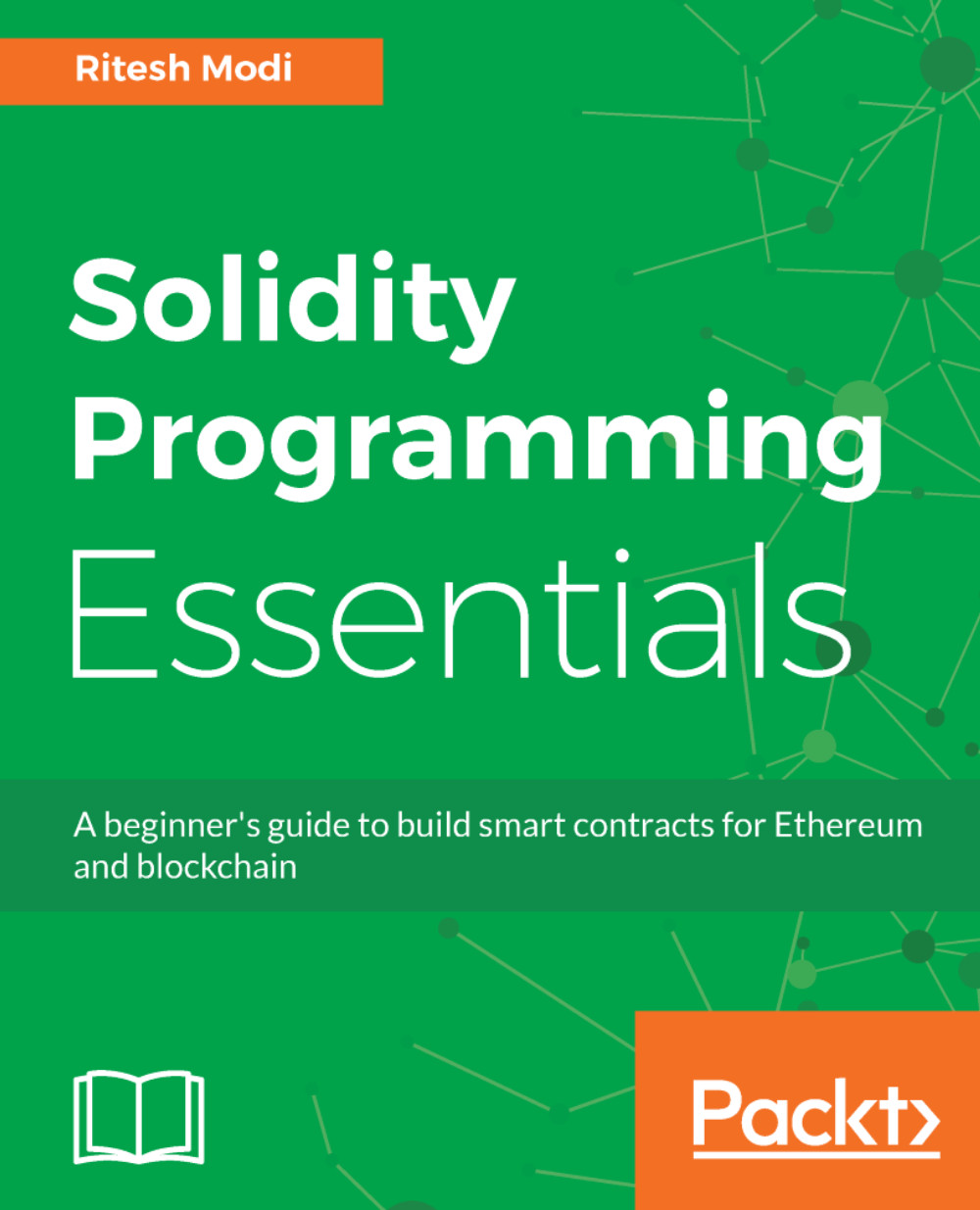Solidity is used to author smart contracts. This chapter is dedicated to smart contracts. It is from here that you will start writing smart contracts. This chapter will discuss the design aspects of writing smart contracts, defining and implementing a contract, and deploying and creating contracts using different mechanisms—using new keywords and known addresses. Solidity provides rich object orientation and this chapter will delve deep into object-oriented concepts and implementations, such as inheritance, multiple inheritance, declaring abstract classes and interfaces, and providing method implementations to abstract functions and interfaces.
This chapter covers the following topics:
- Creating contracts
- Creating contracts via new
- Inheritance
- Abstract contracts
- Interfaces



